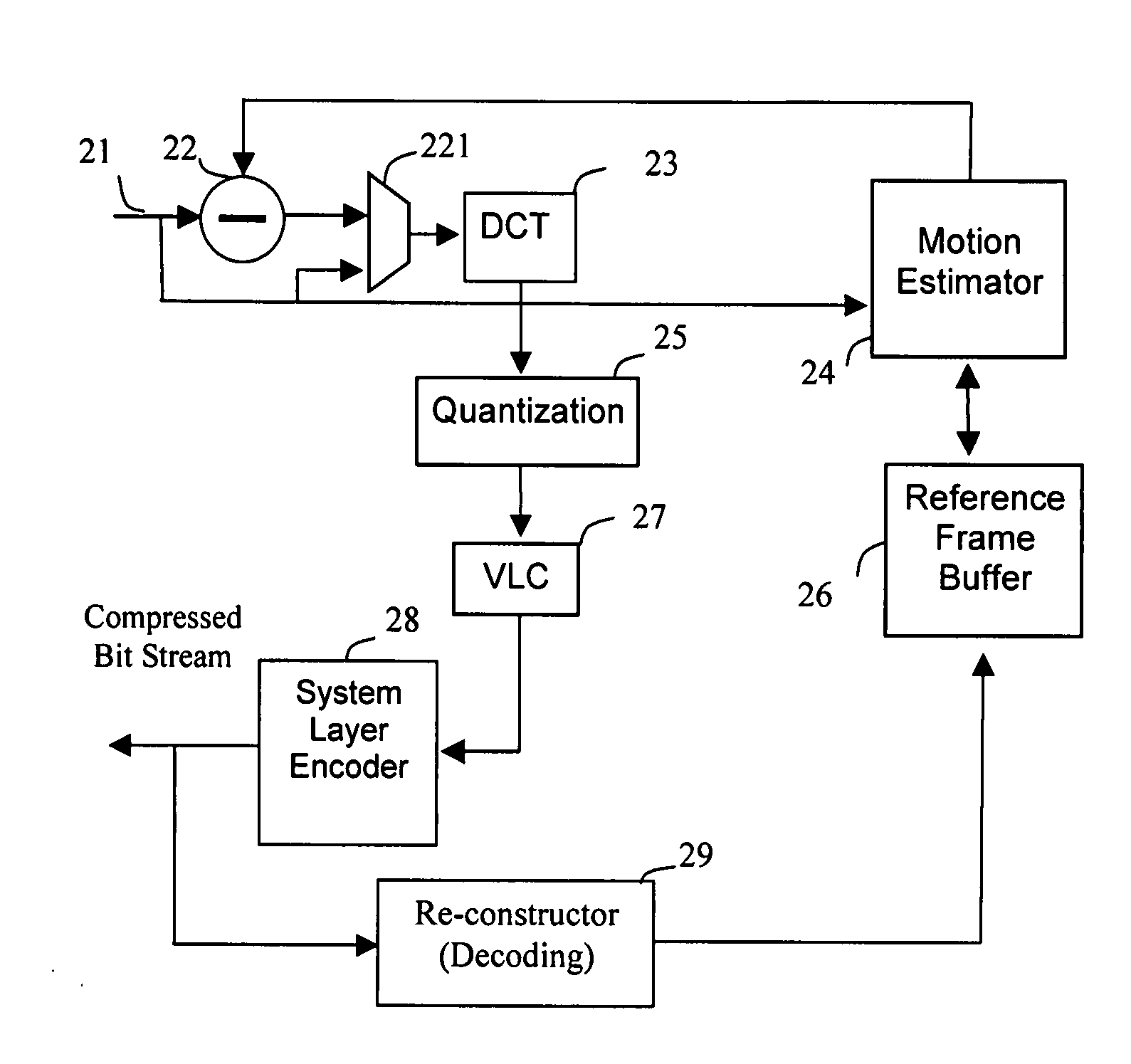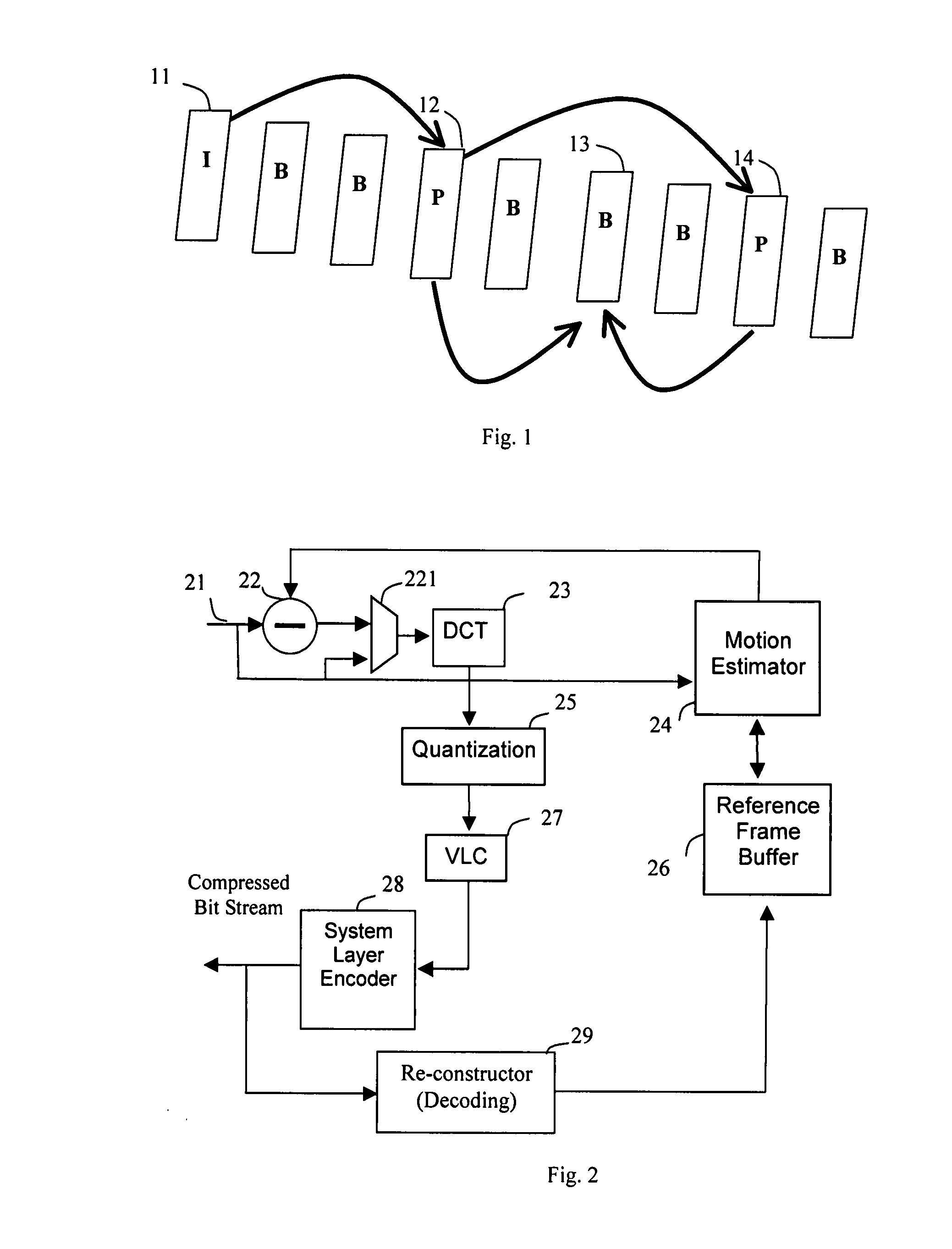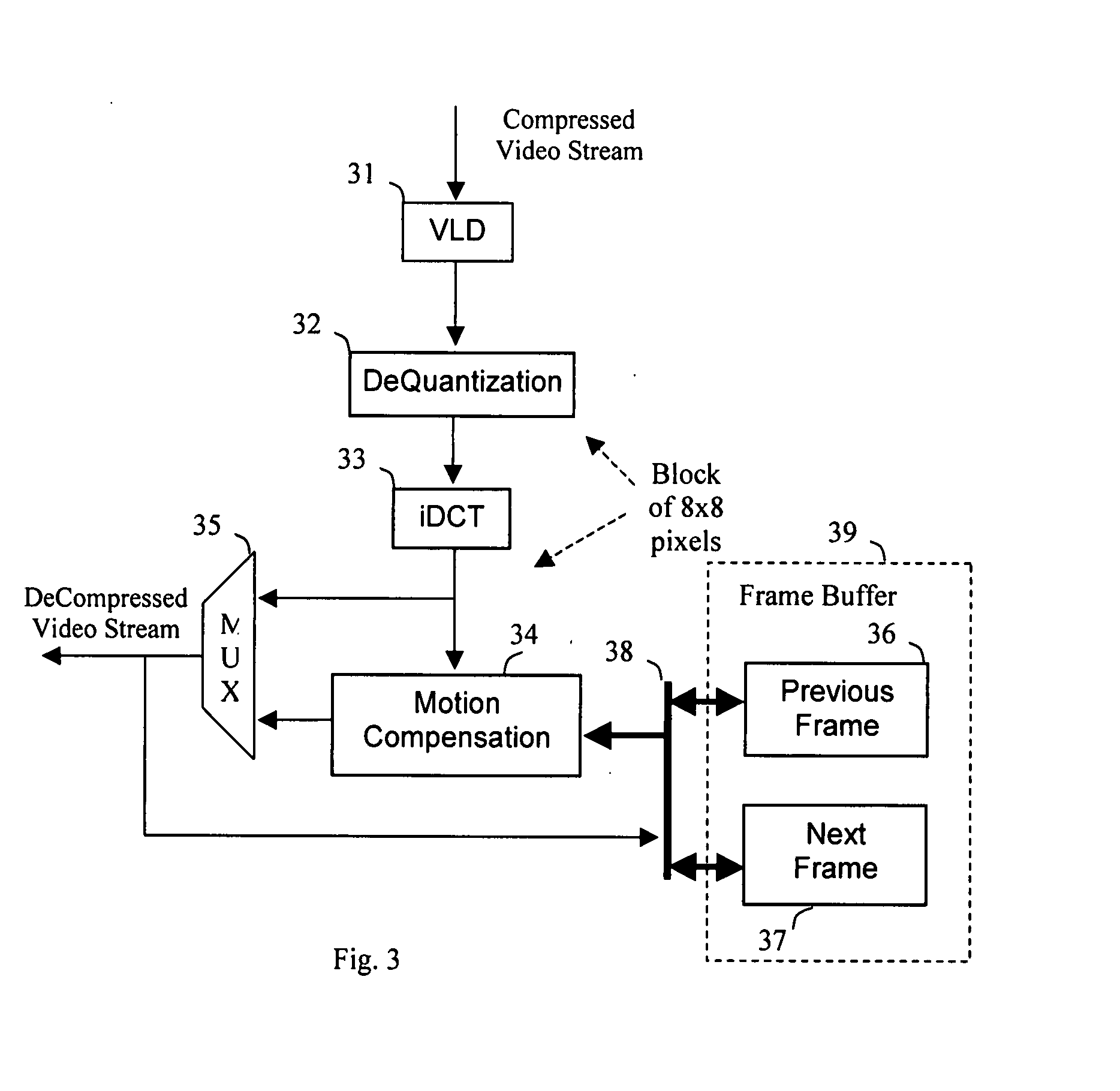Video decompression, de-interlacing and frame rate conversion with frame buffer compression
a frame rate conversion and video decompression technology, applied in the field of digital video decompression, deinterlacing and frame rate conversion with frame buffer compression, can solve the problems of image quality degradation, high semiconductor die area and cost, and the dominance of reference memory, so as to achieve the effect of reducing the cost of image quality, discrepancy and quality degradation
- Summary
- Abstract
- Description
- Claims
- Application Information
AI Technical Summary
Benefits of technology
Problems solved by technology
Method used
Image
Examples
Embodiment Construction
[0041]There are essentially three types of picture coding in the MPEG video compression standard as shown in FIG. 1. I-frame 11, the “Intra-coded” picture, uses the block of pixels within the frame to code itself. P-frame 12, the “Predictive” frame, uses previous I-frame or P-frame as a reference to code the differences between frames. B-frame 13, the “Bi-directional” interpolated frame, uses previous I-frame or P-frame 12 as well as the next I-frame or P-frame 14 as references to code the pixel information.
[0042]In most applications, since the I-frame does not use any other frame as reference and hence no need of the motion estimation, the image quality is the best of the three types of pictures, and requires least computing power in encoding since no need for motion estimation. The encoding procedure of the I-frame is similar to that of the JPEG picture. Because of the motion estimation needs to be done in referring both previous and / or next frames, encoding B-type frame consumes ...
PUM
 Login to View More
Login to View More Abstract
Description
Claims
Application Information
 Login to View More
Login to View More - R&D
- Intellectual Property
- Life Sciences
- Materials
- Tech Scout
- Unparalleled Data Quality
- Higher Quality Content
- 60% Fewer Hallucinations
Browse by: Latest US Patents, China's latest patents, Technical Efficacy Thesaurus, Application Domain, Technology Topic, Popular Technical Reports.
© 2025 PatSnap. All rights reserved.Legal|Privacy policy|Modern Slavery Act Transparency Statement|Sitemap|About US| Contact US: help@patsnap.com



